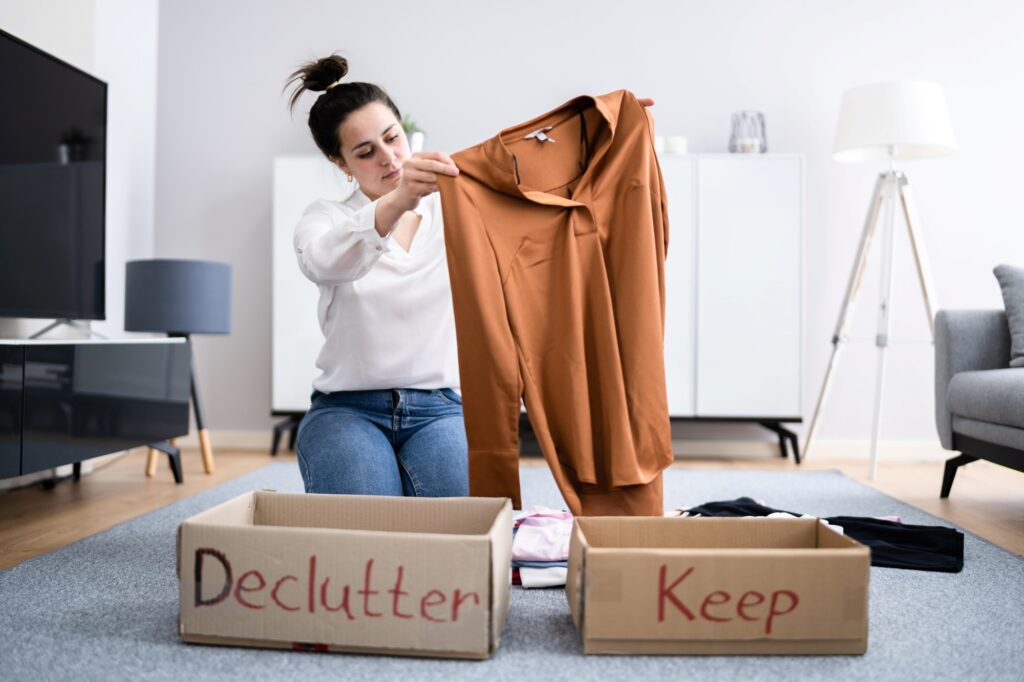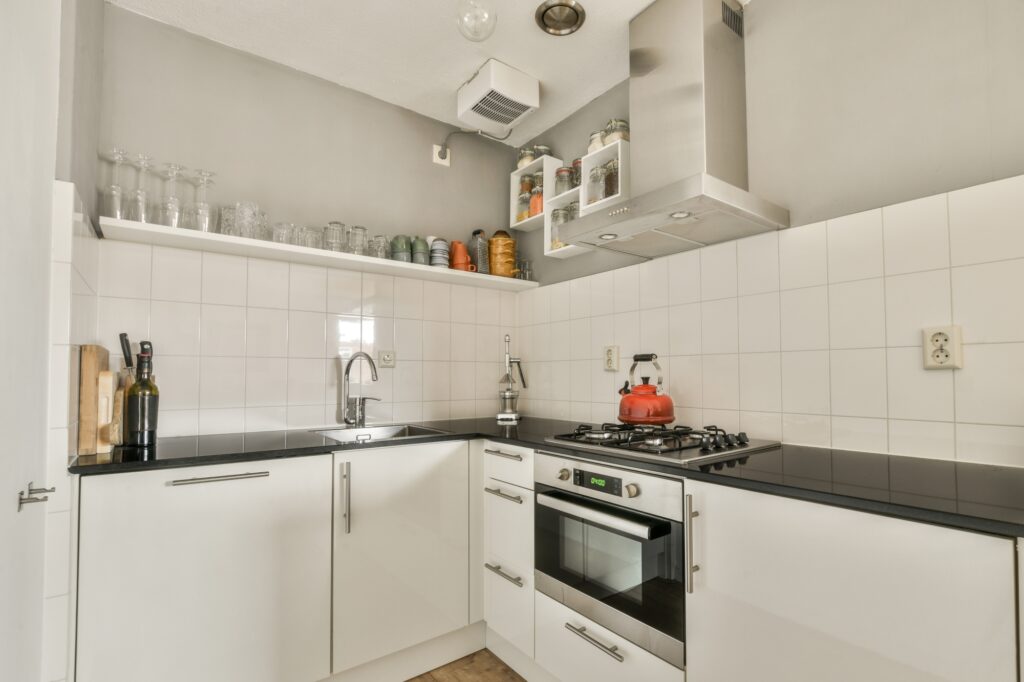Want to know how to pack household items safely for a move? Ensuring your belongings are protected during transit is crucial for a stress-free relocation. This comprehensive guide will provide you with the best packing tips, essential packing supplies, and detailed methods for packing fragile items. Additionally, you’ll find strategies to organise your move efficiently, from selecting the right packing materials to labelling boxes effectively. Start packing with confidence and make your moving process seamless.
Key Takeaways
- Using quality packing supplies and labelling boxes effectively ensures the protection of belongings and streamlines the unpacking process, ultimately making your move more organised and efficient.
- Decluttering and organising belongings before packing reduces moving time and expenses, making the transition smoother and allowing you to focus on settling into your new home without unnecessary clutter.
- Special care should be given to fragile and valuable items during packing, with extra protective measures and proper appliance preparation to avoid damage, ensuring that your most treasured possessions arrive at your new destination safely and intact.
Gathering the Necessary Packing Supplies
The right packing supplies are key to protecting your belongings during a move. Quality packing materials ensure your items arrive safely and make the packing process more efficient. Necessary supplies include boxes, tape, bubble wrap, old newspapers, and a marker pen. Good quality materials can prevent the heartache of damaged items and a stressful unpacking process.
Ensure you have enough boxes in various sizes to accommodate different household items. Large boxes are ideal for lighter, bulkier items, while smaller boxes work well for heavier items. Include packing tape and labelling tools in your list of supplies. These essentials will help you stay organised and ensure your belongings are well-protected throughout the move.
Choosing the Right Packing Materials
Selecting the appropriate packing materials can greatly enhance the protection of your belongings. Bubble wrap is perfect for fragile items while packing paper or bubble wrap can be used to wrap delicate items and fill empty spaces in boxes. For those looking to be eco-friendly, towels and bedsheets can serve as alternatives to traditional packing materials.
You can find packing supplies at local hardware stores, online marketplaces, or community sites like Gumtree and Facebook Marketplace. Secure the corners of moving boxes with tape and use bubble wrap to protect the edges.
This will prevent any shifting during transit and reduce the risk of damage. Additionally, pack boxes carefully to ensure everything stays secure. It’s safer to over-pack with protective materials than risk damaging your precious items.
Packing Tape and Labelling Tools
Strong packing tape secures boxes and ensures your items stay in place during the move. It also helps to secure packing materials like bubble wrap and packing paper, adding an extra layer of protection. Effective labelling of boxes can save time and hassle during unpacking.
Make sure to label each box with the room destination, contents, and any special handling instructions, such as ‘fragile’ or ‘this side up’. For appliances, wrap masking tape around wires and label them to avoid confusion when setting up your new home. Proper labelling ensures everyone knows where each box belongs, making the unpacking process more efficient.
Purge Before You Start Packing

Take time to declutter your home before packing. Decluttering streamlines the packing process and reduces the number of items to move, saving time and money. Begin this process at least seven weeks before your moving date, allowing ample time to sort through everything.
Begin with non-essential items you rarely use, such as seasonal clothing, old books, and unused kitchen gadgets. Prioritising items based on necessity streamline packing and ensures important belongings are safely packed.
Sorting Through Unnecessary Items
Create distinct categories such as keep, sell, donate, or discard when sorting through belongings. This helps you stay organised and make decisions more efficiently. The ‘20/20 rule’ can be particularly useful here – if you can replace an item for less than £20 in under 20 minutes, it might be worth letting go.
Identify fragile and delicate items needing extra care when packing. Sorting and eliminating unnecessary items saves time and reduces the volume of belongings to be moved, making the process smoother.
Organising a Car Boot Sale
A car boot sale is an excellent way to unload unwanted items while making extra money. It also provides an opportunity to engage with the local Richmond community. Advertise your sale on social media and local notice boards to attract more visitors. You’ll lighten your load for the move and earn cash that can go towards moving expenses.
Packing Fragile Items Safely
Extra attention and care are needed when packing fragile items to ensure they arrive safely. Utilise ample protective materials like bubble wrap and stretch wrap to safeguard these items during transportation. Individually wrap each fragile item and pack them tightly to prevent shifting and damage.
Wrap each piece of glassware and bowls individually before stacking them in boxes. Pack plates on their sides rather than flat to minimise breakage risk. For framed art, tape a cross shape on the glass to reduce shattering risk. If you have unframed artwork, use acid-free tissue paper and secure it to cardboard for added protection.
Consider hiring a professional packing service to handle especially valuable or delicate items. These services have the expertise and materials to ensure your fragile items are packed and transported safely. These precautions significantly reduce damage risk during your move.
TIP
When packing fragile items for your move to Richmond, prioritise safety by wrapping each piece individually with protective materials like bubble wrap. For added security, pack plates on their edges, stack glassware carefully, and use specialised techniques for artwork to prevent damage during transit.
Packing Different Rooms Efficiently
Packing each room separately makes the moving process more manageable and organised. Start by listing some items to begin packing with non-essential items and work your way through each room systematically. This approach keeps similar items together and simplifies unpacking in your new home.
Different coloured labels for each room make it easier to place boxes in the right location. Clearly label each box with its contents and the room it belongs to, saving time and reducing stress during unpacking. Packing fragile items in drawers or using furniture to store smaller items saves space and provides extra protection.
Bedroom Packing Tips
Careful organisation is essential when packing bedroom items to ensure everything arrives intact. Wardrobe boxes are perfect for moving hanging clothes, keeping garments wrinkle-free and easy to transport. Alternatively, leave clothes on hangers, secure them with elastic bands, and cover them with bin bags for a budget-friendly option.
Pack off-season clothing, books, and keepsakes well in advance to save time closer to the moving date. Keep important documents organised and separate to avoid losing them during the move. This ensures you stay organised and that your most important belongings are easily accessible.
Kitchen Packing Tips
The kitchen can be challenging to pack due to the variety of items it contains. Thoroughly wash and dry all kitchen items before packing to avoid contamination. Use bubble wrap to protect glasses and other fragile items, positioning them with the widest part facing downward to prevent breakage.
Living Room Packing Tips
Packing the living room involves handling large and often bulky items like furniture and electronics. Disassemble furniture into smaller parts to facilitate easier transport. Store all hardware in a labelled bag and tape it to the corresponding furniture to avoid losing any pieces.
Wrap furniture with old bedding or large boxes to prevent scratches during transit. For particularly heavy or bulky items, consider hiring a removal company that offers specialist blanket wraps and heavy-lifting assistance. This protects your belongings and makes the moving process smoother.
Special Considerations for Valuable Items
Valuable items like jewellery, antiques, and important documents need special attention during a move. Pack these items separately and consider moving them yourself to ensure their safety. Use protective materials like bubble wrap and packing paper to wrap delicate items and prevent damage.
For added security, keep all important documents in a separate, clearly labelled box or bag. This makes them easier to locate during unpacking and reduces the risk of loss or damage. By taking these precautions, you can ensure that your most valuable possessions arrive safely at your new home.
Preparing Appliances for Moving

Properly preparing appliances for a move avoids damage and ensures they function correctly in your new home. Check the user manual for specific instructions on disconnecting and preparing each appliance. Disconnect water lines and ensure they are empty and drained to prevent leaks during transit.
Thoroughly clean each appliance after disconnecting to avoid any mess during the move. Use moving blankets or bubble wrap to protect appliances in transit, and tape doors shut with masking tape to secure them. This prevents damage and ensures your appliances arrive in good working condition.
Defrosting and Cleaning
Unplug your fridge-freezer and leave the door open to defrost. Place towels around the fridge to absorb any melting water. After defrosting, wash and thoroughly dry each drawer before reassembling. This ensures your fridge-freezer is clean and ready to use upon arrival.
Securing Loose Items
Before moving appliances, remove all parts like shelves and trays, and securely wrap them to prevent damage during transport. Secure appliance doors with bubble wrap, rope, or tape to prevent them from swinging open during the move. This step can save you the hassle of dealing with broken or damaged parts.
Use tools like transport dollies when moving heavy appliances to reduce injury risk and ease the process. Attach transit bolts to washing machines to keep the drum stable and prevent damage during the move. Keep appliances upright during transportation to avoid damaging internal components, especially the compressor in refrigerators.
Creating an Essentials Box
An essentials box is a lifesaver during a move, containing items needed immediately upon arriving at your new home. This box should include important documents like birth certificates and passports, toiletries, snacks, a first aid kit, and other necessities.
Creating digital backups of important documents can protect against loss during the move. Pack an essentials box for each family member as well. This ensures everyone has what they need and reduces stress during the transition. Keep these boxes with you to ensure easy access during the move.
Packing an Overnight Bag
An overnight bag is crucial for the first night in your new home. Include essential items like clothes and toiletries to freshen up and feel comfortable. If you have children, pack their favourite toys to help them adjust more comfortably.
This small step ensures a restful first night by having all your immediate necessities within reach. By packing an overnight bag with essential items, you can focus on settling into your new environment without the hassle of rummaging through boxes. This preparation not only provides comfort but also reduces stress, making the transition to your new home smoother.
Keeping Important Items Handy
Keep important documents in a separate box or labelled bag for easy identification. An essentials box for moving day should include toiletries, snacks, a first aid kit, and other necessities for easy access. This preparation saves time and reduces stress, making moving house day less daunting.
RECOMMENDATION
Pack an essentials box for your move to Richmond with items like important documents, toiletries, and snacks for immediate access upon arrival. In addition, prepare an overnight bag with clothes and comfort items to ensure a smooth and stress-free first night in your new home.
Final Checks and Moving Day Tips
Pack everything 1-2 days before the moving day to ensure a smooth transition. Start cleaning your home to ensure nothing is left behind, making the move easier. Label boxes by room and contents for easier unpacking in your new home. Using protective materials in each box prevents damage during the move.
When packing, start from the top of the house and move downwards to maintain greater efficiency. Clean and dry appliances thoroughly before packing them to avoid leaks and mess. Allow a couple of days for freezers to defrost before moving them, ensuring they are ready. By following these last-minute checks, you can significantly reduce stress for moving days.
Here are some tips for the moving day to ensure a move without hiccups and to keep your energy high.
Double-Checking Labels
Accurate labelling of boxes ensures that items are easily identifiable during the move. Labels on boxes should indicate not just the room but also any fragile items and hazardous materials. Double-checking labels can save time and prevent confusion during unpacking, making the entire process smoother.
Staying Hydrated and Taking Breaks
Staying hydrated during the move is crucial for maintaining energy levels and focus. Taking regular breaks helps prevent fatigue and maintains focus during the moving process. Incorporate scheduled hydration breaks and rest periods into your moving day to sustain productivity.
Summary
Packing for a move to Richmond doesn’t have to be a stressful experience. By gathering the necessary packing supplies, decluttering before you start packing, and following our detailed tips for packing different rooms and fragile items, you can ensure a smooth and efficient relocation. Proper preparation, including the creation of an essentials box and careful handling of valuable items, will make your move more manageable and less overwhelming.
Remember, moving is a fresh start and an exciting new chapter in your life. Embrace the process with confidence, knowing that you have taken all the necessary steps to safeguard your belongings and make your transition to Richmond as seamless as possible. Happy moving!
Frequently Asked Questions
What are the most essential packing supplies I need?
To ensure a smooth packing process, you need boxes, tape, bubble wrap, old newspapers, and a marker pen. These supplies will help protect your items and keep your move organised.
How can I ensure my fragile items are packed safely?
To ensure your fragile items are packed safely, use ample protective materials such as bubble wrap and packing paper, and pack the items tightly to minimise movement during transit. This approach will significantly reduce the risk of damage.
What should I do with items I no longer need before moving?
Before moving, sell unwanted items at a car boot sale or donate them to charity to reduce clutter and help others. This not only eases your move but also supports a good cause.
How do I prepare my appliances for moving?
To effectively prepare your appliances for moving, check the user manual for specific instructions, disconnect any water lines, and ensure each appliance is thoroughly cleaned. Taking these steps will help prevent damage and secure a smoother relocation.
Why is an essentials box important?
An essentials box is crucial as it provides immediate access to necessary items, helping to reduce stress during your transition to a new home. Keeping essentials organised and readily available simplifies the moving process.






